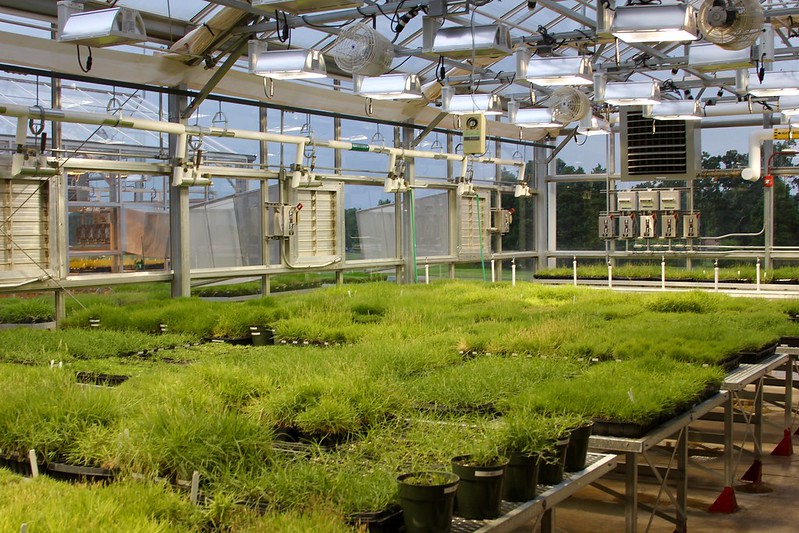By Maria M. Lameiras
Prices for sod, including rolls of University of Georgia-bred turfgrass varieties, will be higher for homeowners and landscapers this year.

Low inventory of some varieties, combined with economic pressures exacerbated by supply chain and global issues, are pushing the price of a manicured lawn higher this spring.
Depending on the specific variety, it might be more difficult to get the grass you want. But you can be assured that it will be more expensive, according to the 2022 Annual Georgia Sod Producers Inventory Survey conducted by the University of Georgia (UGA) College of Agricultural and Environmental Sciences (CAES) and the Georgia Urban Ag Council.
The 26th annual survey of 18 producers (representing farms from less than 300 acres to more than 900) estimated inventory for bermudagrass, zoysiagrass, centipedegrass, St. Augustine grass and tall fescue based on projected sales for the first five months of 2022.
Inventory Levels
The majority of surveyed producers grow bermudagrass, with most forecasting an insufficient supply for the spring and early summer. Producers growing zoysiagrass, a popular species with many commercially available cultivars, forecast a poor zoysiagrass supply in 2022, regardless of farm size.
A moderate number of centipedegrass producers expected an adequate supply early in the year, while only one-third of producers growing St. Augustine grass report a sufficient supply. Despite seed supply issues from Oregon, many Georgia sod producers reported excellent to adequate inventory of tall fescue.
“Bermudagrass may be in shorter supply early in 2022 than in previous years,” said Clint Waltz, UGA Cooperative Extension turfgrass specialist, who calculated the survey results for the Georgia Urban Ag Council. “Tall fescue inventory may meet demand, but there is a potential for limited supply relative to the past.”
Sod prices
Both on-the-farm and delivered prices of all cultivars are expected to increase over 2021 prices.
“While greater than the 2021 price, centipedegrass and St. Augustine grass will have the lowest price increase relative to the other three species,” Waltz said. “Growers are warning of a significant price increase in early 2022.”
The estimated cost to deliver sodded grass has also increased. One respondent reported adding a $5 per mile fuel surcharge, with a maximum of $50, to a load in 2022 due to increased fuel costs.
Who’s Buying?
Most turfgrass sold was to landscape contractors, who represent the largest marketing channel for horticulture and specialty crops.
Golf courses come in at second, with many courses undertaking upgrades and renovations due to a surge in interest among golfers during the pandemic, Waltz said.
The Year in Turfgrass
While more than 40% of the producers surveyed planned to add acres into production during 2022, the cumulative total for this year’s increase is approximately 400 acres, down from 600 acres forecast in 2021.
“Since 2019, bermudagrass and zoysiagrass ready for harvest in late winter and through the spring, are down 47% and 61%, respectively,” Waltz said. “While producers have been steadily adding acres since the economic downturn of the late 2000s, it was not at a rate to meet current demand.”
Costs could rise even higher than estimated in this year’s survey.
“It is hard to predict consumer demand for grass in early spring, but if current market forces continue, sod sales will likely remain high, further pressuring inventories and pricing,” Waltz said.
To view the complete survey, visit the Georgia Urban Ag Council website at urbanagcouncil.com or UGA’s turfgrass page at GeorgiaTurf.com.










